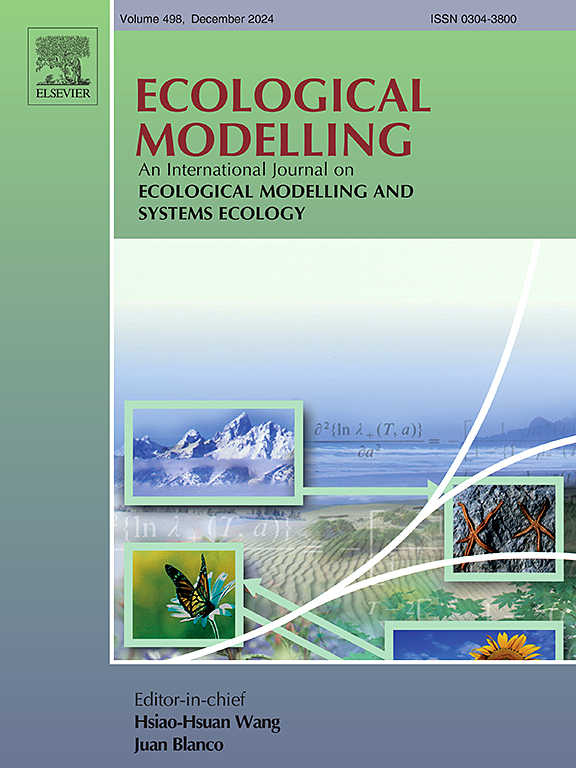确定增强森林碳吸收的最佳云层:周期性近地电荷-过冲建模
IF 2.6
3区 环境科学与生态学
Q2 ECOLOGY
引用次数: 0
摘要
在某些阴天,许多森林生态系统的碳吸收和水利用效率都会提高,这就是阴天森林通量异常。利用集合方法分析涡度-协方差通量,我们诊断了温带阔叶林和热带常绿林的净生态系统交换(NEE)和水分利用效率(WUE)对自然波动光照制度的响应。在此,我们采用一阶动态模型的平均净射强度和蒸散量解决方案来描述观测到的整个树冠对周期性光照的敏感性。在部分阴天,与传统的稳态平衡估计值相比,中纬度落叶林和热带常绿林的最大总净能效增幅分别为≈25%和≈15%。这一发现支持了我们的结论,即在许多情况下,阴天异常是树木对积云经过时引起的光照波动机制做出动态响应的结果。本文章由计算机程序翻译,如有差异,请以英文原文为准。
Identifying optimal cloud cover for enhanced forest carbon uptake: Periodic-case NEE-overshoot modelling
On certain kinds of cloudy days, many forested ecosystems exhibit enhanced carbon uptake and water-use efficiency-the cloudy-day forest flux anomaly. Using ensemble methods to analyze eddy-covariance fluxes, we have diagnosed net ecosystem exchange (NEE) and water-use efficiency (WUE) of a temperate broadleaf forest and a tropical evergreen forest as they responded to natural fluctuating-light regimes. Here we apply average NEE and evapotranspiration solutions of a first-order dynamic model to describe the observed whole-canopy sensitivity to periodic light. On partly-cloudy days, maximum overall NEE enhancements over conventional steady-state equilibrium estimates are ≈ 25% for a midlatitude deciduous forest and ≈ 15% for a tropical evergreen forest. This finding supports our conclusion that in many cases the cloudy-day anomaly is a consequence of a dynamic response by the trees responding to fluctuating-light regimes occasioned by passing cumulus clouds.
求助全文
通过发布文献求助,成功后即可免费获取论文全文。
去求助
来源期刊

Ecological Modelling
环境科学-生态学
CiteScore
5.60
自引率
6.50%
发文量
259
审稿时长
69 days
期刊介绍:
The journal is concerned with the use of mathematical models and systems analysis for the description of ecological processes and for the sustainable management of resources. Human activity and well-being are dependent on and integrated with the functioning of ecosystems and the services they provide. We aim to understand these basic ecosystem functions using mathematical and conceptual modelling, systems analysis, thermodynamics, computer simulations, and ecological theory. This leads to a preference for process-based models embedded in theory with explicit causative agents as opposed to strictly statistical or correlative descriptions. These modelling methods can be applied to a wide spectrum of issues ranging from basic ecology to human ecology to socio-ecological systems. The journal welcomes research articles, short communications, review articles, letters to the editor, book reviews, and other communications. The journal also supports the activities of the [International Society of Ecological Modelling (ISEM)](http://www.isemna.org/).
 求助内容:
求助内容: 应助结果提醒方式:
应助结果提醒方式:


